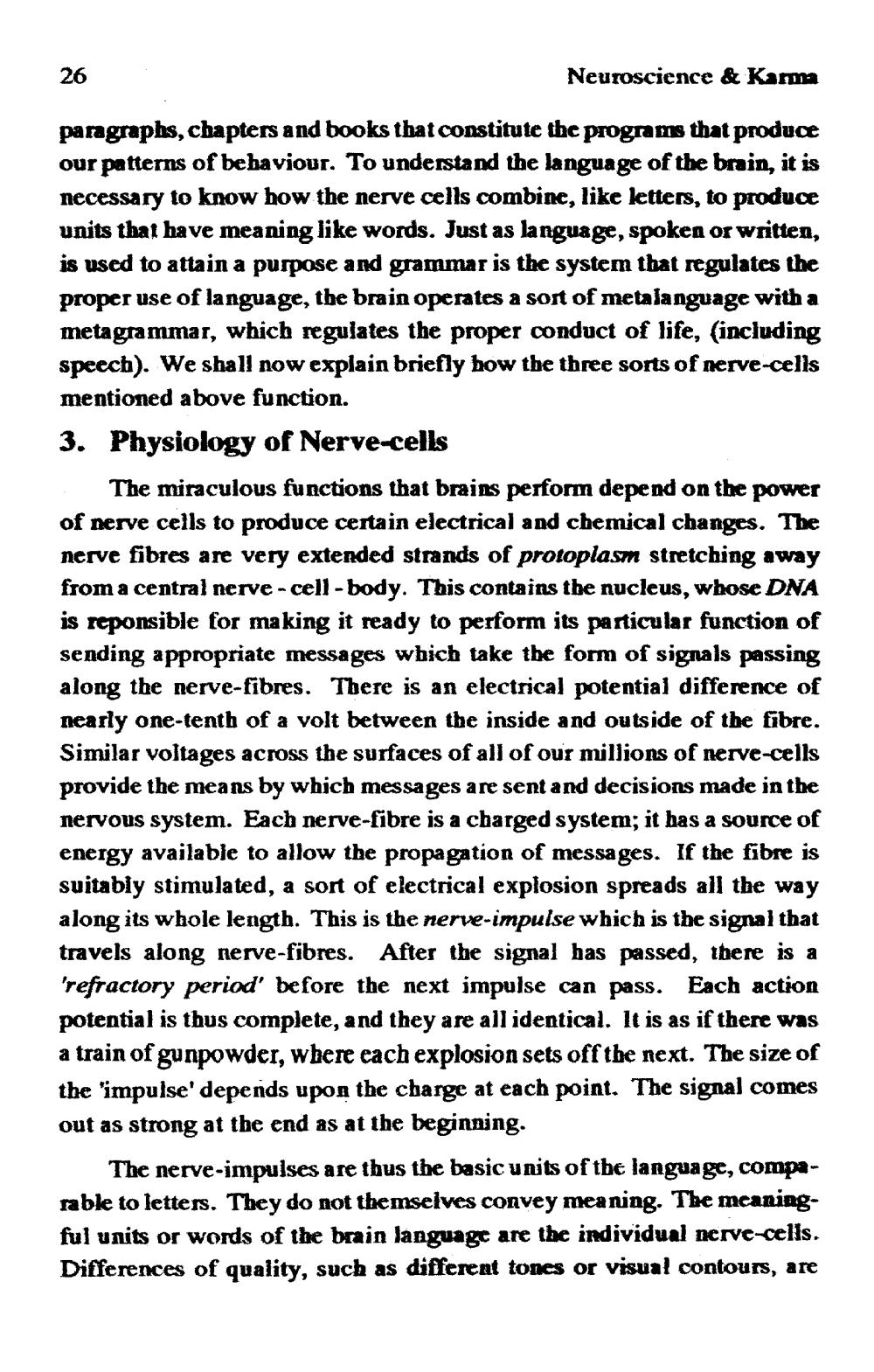________________
26
:
Neuroscience & Karma
paragraphs, chapters and books that constitute the programs that produce our patterns of bebaviour. To understand the language of the brain, it is necessary to know how the nerve cells combine, like letters, to produce units that have meaning like words. Just as language, spoken or written, is used to attain a purpose and grammar is the system that regulates the proper use of language, the brain operates a sort of metalanguage with a metagrammar, which regulates the proper conduct of life, (including speech). We shall now explain briefly how the three sorts of nerve-cells mentioned above function. 3. Physiology of Nerve cells
The miraculous functions that brains perform depend on the power of nerve cells to produce certain electrical and chemical changes. The nerve fibres are very extended strands of protoplasm stretching away from a central nerve-cell - body. This contains the nucleus, whose DNA is reponsible for making it ready to perform its particular function of sending appropriate messages wbich take the form of signals passing along the nerve-fibres. There is an electrical potential difference of nearly one-tenth of a volt between the inside and outside of the fibre. Similar voltages across the surfaces of all of our millions of nerve-cells provide the means by which messages are sent and decisions made in the nervous system. Each nerve-fibre is a charged system; it has a source of energy available to allow the propagation of messages. If the fibre is suitably stimulated, a sort of electrical explosion spreads all the way along its whole length. This is the nerve-impulse which is the signal that travels along nerve-fibres. After the signal has passed, there is a 'refractory period' before the next impulse can pass. Each action potential is thus complete, and they are all identical. It is as if there was a train of gunpowder, where each explosion sets off the next. The size of the 'impulse' depends upon the charge at each point. The signal comes out as strong at the end as at the beginning.
The nerve-impulses are thus the basic units of the language, comparable to letters. They do not themselves convey meaning. The mcaniag. ful units or words of the brain language are the individual nerve cells. Differences of quality, such as different tones or visual contours, are




